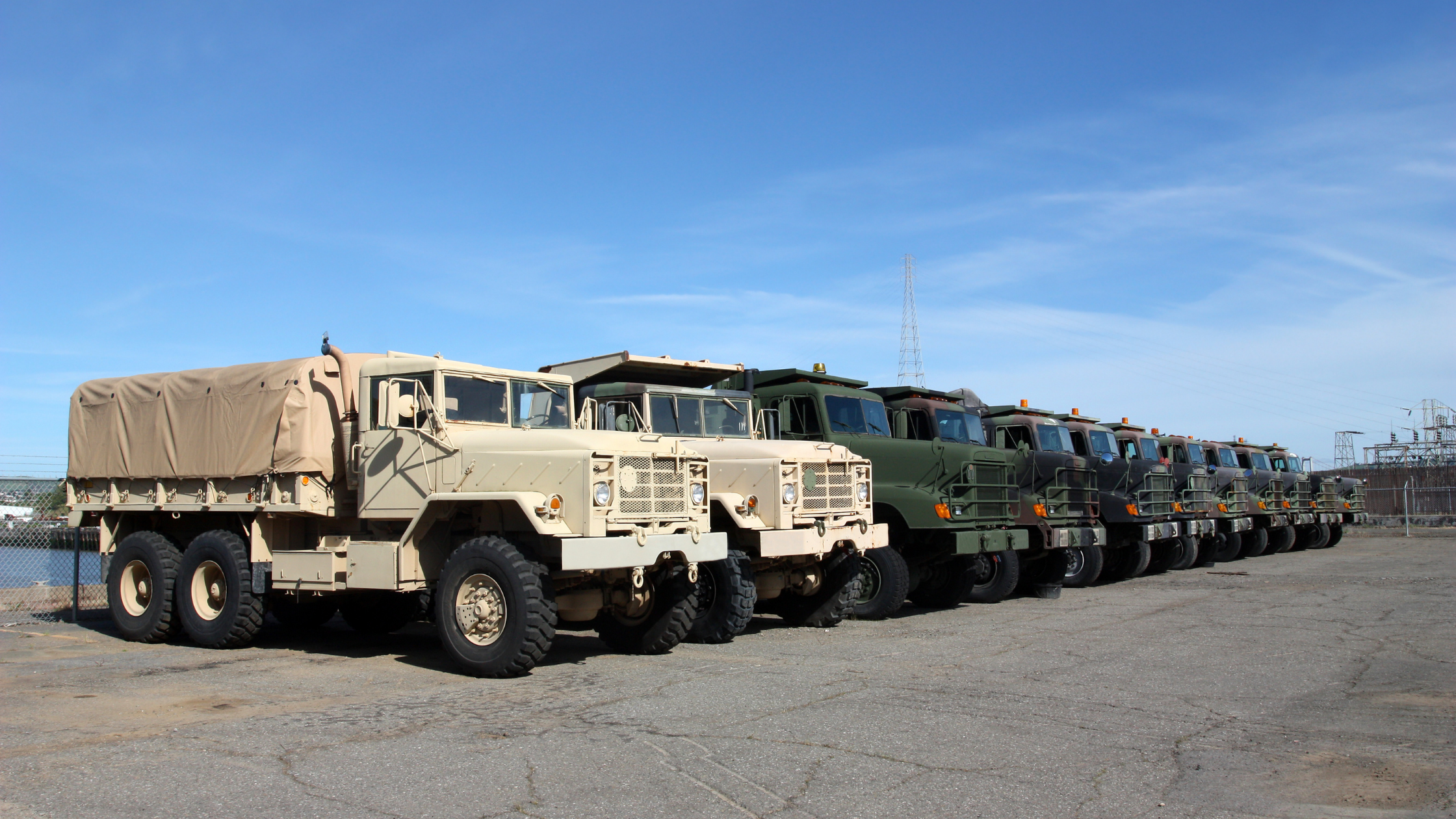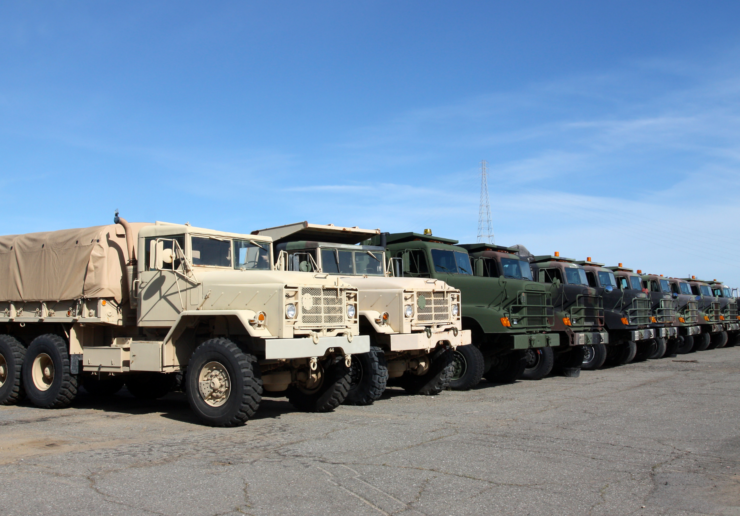
Armor plates protect lives and critical assets from damage caused by high-velocity objects. These robust shields provide enhanced security in various industries, from defense and security to heavy machinery and transportation.
In this article, we will explore the world of armor plates, including the materials used in their construction, the dimensions of armor steel, the significance of military armor grades, and the manufacturing process. We’ll also touch on the applications of armor plates and the certification process that ensures their reliability and performance.
Kloeckner Metals is a full-line steel supplier and service center. Download our structural plate spec sheet to see in greater detail what Kloeckner Metals routinely stocks.
Armor steel plates are specially designed protective components used to shield against ballistic threats, impacts, and abrasions. These plates are commonly used in military transportation, body armor, armored vehicles, or infrastructure requiring enhanced security. Their purpose is to mitigate potential damage from attacks and to improve safety in high-risk scenarios.
Body armor plates can be created from ceramic, polyethylene, kevlar, or steel. Since it has to be carried by a person, body armor needs to be both light and effective. Armor plates for vehicles or buildings, however, can be made from heavier materials.
Primarily, armor plate is made from steel, specifically high-strength, hardened steel alloys that comply with military specifications. The specific steel alloys used in armor plates possess exceptional strength, toughness, and resistance to penetration. These alloys undergo rigorous manufacturing processes to achieve the desired protective properties.
Military armor plates are critical components of protective equipment used by military personnel and vehicles to mitigate the effects of projectiles, explosions, and other threats on the battlefield. These plates are designed to provide varying levels of resistance against different types of ammunition and combat scenarios. Among the armor grades used, MIL-A-46100 and MIL-A-12560 are two widely recognized specifications.
MIL-A-46100 is a specification that defines the requirements for high-hardness armor plate designed to withstand ballistic threats. It is typically used for armored vehicles, including tanks and personnel carriers. This armor grade offers exceptional resistance against armor-piercing projectiles, such as those fired from heavy-caliber rifles and machine guns. MIL-A-46100 plates are made from high-hardness, low-alloy steel, which undergoes rigorous heat treatment processes to achieve the desired strength and toughness. This treatment enhances the plate’s ability to absorb and dissipate the energy generated by incoming projectiles, minimizing the chances of penetration.
On the other hand, MIL-A-12560 is a specification that addresses the requirements for homogeneous armor plate designed for use in military vehicles and aircraft. This armor grade is more versatile compared to MIL-A-46100, as it provides protection against a wider range of threats, including ballistic, blast, and fragmentation hazards. MIL-A-12560 plates are made from a variety of materials, such as steel, aluminum, and composite laminates, depending on the desired characteristics and weight considerations. These plates undergo stringent testing to ensure they meet specific performance requirements, including hardness, tensile strength, and resistance to penetration.
Both MIL-A-46100 and MIL-A-12560 are subjected to rigorous testing procedures to evaluate their performance under various conditions. These tests involve shooting the armor plates with different ammunition types at specified velocities and angles to assess their resistance capabilities. Additionally, non-destructive testing techniques, such as ultrasonic inspection, are employed to detect any defects or inconsistencies in the plates’ structure.
The choice between MIL-A-46100 and MIL-A-12560 depends on the intended application and the level of protection required. While MIL-A-46100 provides superior resistance against armor-piercing projectiles, MIL-A-12560 offers a more comprehensive defense against a wider range of threats. Consequently, MIL-A-46100 is often used in heavily armored vehicles where the primary concern is armor-piercing threats, while MIL-A-12560 finds applications in various military vehicles and aircraft that require a balance between protection and weight considerations.
Military armor plates play a crucial role in safeguarding military personnel and vehicles from ballistic and other threats on the battlefield. Grades such as MIL-A-46100 and MIL-A-12560 are designed to meet specific requirements and provide varying levels of protection. MIL-A-46100 excels in countering armor-piercing threats, while MIL-A-12560 offers a more versatile defense against a broader spectrum of hazards. The choice of armor grade depends on the intended application, the level of protection needed, and other factors like weight considerations.
Armor steel plates are manufactured in various dimensions to cater to different applications and requirements. Commonly, these plates can range in thickness from less than 5 millimeters to 5/8ths of an inch, depending on the intended level of protection and the specific threat it aims to counter. Plates can be up to 580 inches long and 96 inches wide. The dimensions are carefully determined to balance weight, performance, and the required level of defense.
Various companies specialize in transforming military grade steel into steel armor plates. These companies possess the expertise, technology, and equipment necessary to shape, cut, and fabricate steel to meet the precise specifications required for armor applications. These processes often involve cutting, bending, welding, and heat treatment to achieve the desired final product.
Armor plates find applications in a diverse range of products and industries. These include military and law enforcement vehicles, body armor for personnel, armored vehicles used in transportation and security, protective panels for buildings and infrastructure, and heavy machinery components subjected to high impact and abrasion.
Certification plays a crucial role in ensuring the reliability and performance of armor plates. Independent testing agencies and organizations, such as the National Institute of Justice (NIJ) in the United States, conduct comprehensive tests to evaluate the ballistic resistance and effectiveness of armor plates. The certification confirms that the armor meets specific standards and provides the expected level of protection.
Armor plates rely on high-strength steel alloys, particularly military grades, to deliver reliable protection against ballistic threats and abrasion. The careful selection of steel, precise dimensions, and the expertise of companies involved in their manufacturing are critical factors in producing effective armor plates. With proper certification, armor plates provide an essential layer of safety in diverse applications, ensuring the protection of lives and critical assets in high-risk environments.
In the market for military grade steel? Kloeckner Metals is a full-line steel supplier and service center. We combine a national footprint with the latest fabrication and processing technologies and the most innovative customer service solutions.

Steel base plates are fundamental elements employed in various manufacturing...
Metal fabrication is a critical process that transforms raw metal...
The solar industry has undergone a significant transformation by incorporating...

X
The Kloeckner Metals website uses modern technologies. Unfortunately, your browser doesn't support those technologies.
Download the latest version of one of these browsers to experience the site: